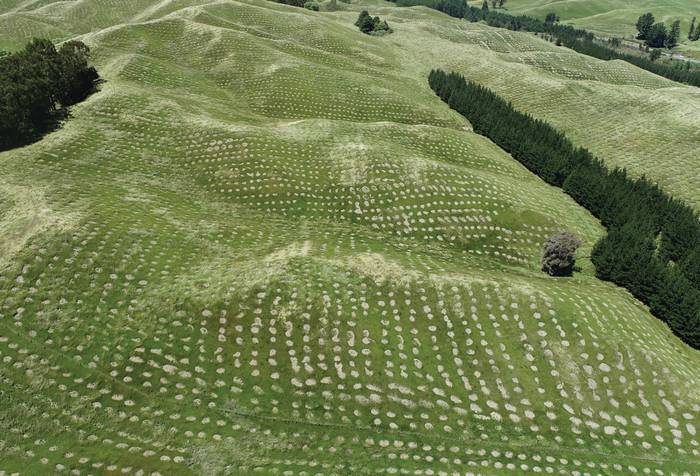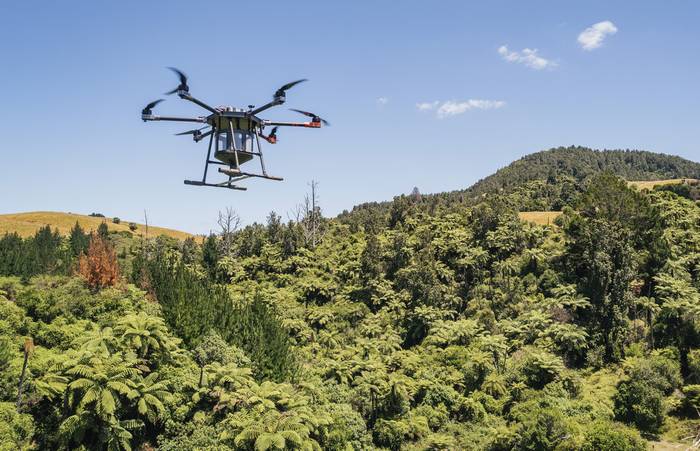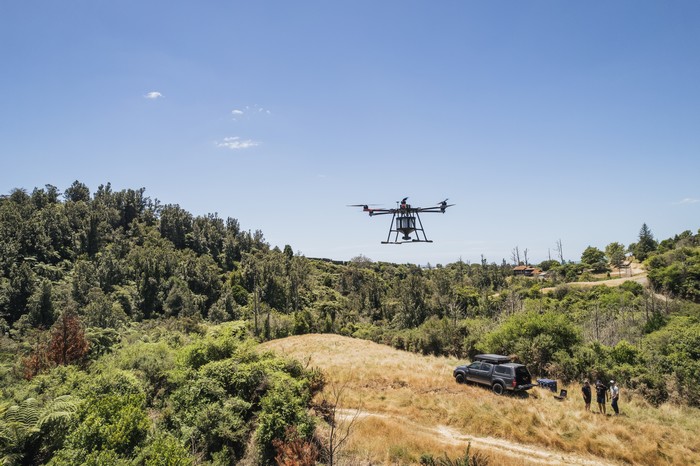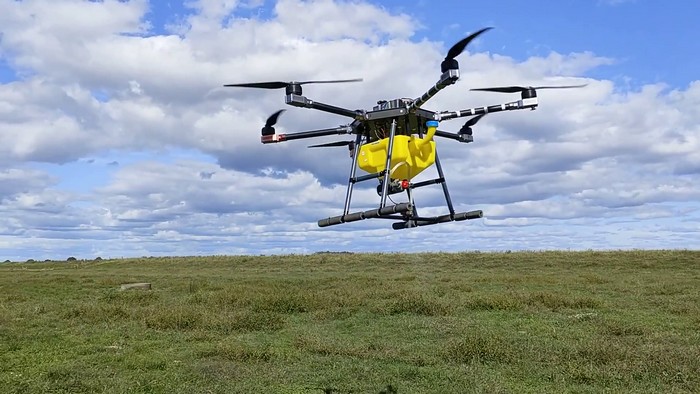A forest of one

A single tree does not make a forest – just yet. Scion is developing and testing a range of precision forestry technologies with Hawke’s Bay forestry company Pan Pac Forest Products to make a ‘forest of one’ a reality sooner rather than later.
A forest of one means that we are effectively able to apply forestry management decisions to individual trees, explains Scion autonomous systems scientist Robin Hartley. The idea is not just conceptual – it is at or very near reality for a surprising number of forestry management operations.
“The future of precision forestry is not just sitting on a lab bench – it’s being used in the forest now,” says Hartley.
Pan Pac is moving to a precision forestry management model at a rapid pace. Managing 35,000 hectares of forestry, Pan Pac is a vertically integrated forestry products company. It uses 725,000 tonnes of logs in its own sawmill and 670,000 tonnes of residual and pulp logs are sent to the pulp mill. Consistently supplying the right type of log to its own mills is crucial and anything that can potentially interrupt that log supply is treated seriously.
Pan Pac forestry manager Sean Wright explains that current precision forestry technologies, when used together, will result in a seven percent improvement in final crop value per hectare across Pan Pac’s forest estate. These sorts of efficiency gains and the ability to de-risk possible future labour shortages will be crucial to help forestry companies thrive and innovate in the future.
“The reality of our industry is that there are not enough skilled labourers willing to take up work in our forests year-round.
“We need crews working in planting, pruning and thinning at different times of the year and it’s getting harder to source labour in the Hawke’s Bay. If allowed to continue, a shortage of skilled labourers could put future profitability of our processing operations at risk,” he says.
Scion New Value from a Digital Forest and Wood Sector portfolio leader Claire Stewart says it’s heartening to see a forestry company such as Pan Pac, who have a willingness to see things differently, put their own funding towards operationalising precision forestry.
“There is an openness to work in partnership to change the way things have traditionally been done,” she says.
Pruning decisions for individual trees
The Pan Pac sawmill requires a consistent supply of quality pruned logs and this means the management of pruning operations is critical. All decisions related to the timing of pruning, which trees to prune, as well as pruning height impact on clearwood volumes.
Increasingly, these decisions will soon be able to be made from remote sensing data and powerful algorithms that consider individual tree qualities, such as tree height, their position relative to other trees in the stand and location. At individual tree level, pruning decisions are virtually impossible to make from the ground. A silviculture work crew cannot effectively evaluate all the factors to choose the ideal tree to prune in a stand, given they are swamped in undergrowth and surrounded by branches. They literally cannot see the wood for the trees.
This means that, by necessity, forestry management works to the average tree.
“Average is rarely, if ever, optimal,” says Wright. “Some trees will be pruned too early and others too late and often the wrong trees are pruned.”
To increase the volume of pruned logs from these remotely selected trees, pruning will move from an average of around six metres (the height crews can reach from the ground) to 10 metres, which can be pruned by robots. This increase in pruning height means that Pan Pac can harvest two pruned logs per tree. Ten metre pruning height is at the upper limit of where it is safe and practicable to prune using silvicultural crews, so robotic pruning is a future reality.

Planning where to plant
Scion and Pan Pac are currently working on a model that uses spatial layers, derived from remotely sensed and other data, to predict the optimal planting locations for planting a 750 hectare radiata pine stand. The next step, spraying the site with herbicide, requires some heavy lifting (literally) and that’s where Taurangabased R&D company Envico come in.
Envico has many years of experience using unmanned aerial vehicles (UAVs or drones) for pest control work. Envico director Cameron Baker says they have been trialling a drone capable of applying 20 litres of herbicide in one flight. That would spray about 900 trees per flight. A larger model UAV, which they intend to use with Pan Pac, will spray around 2,000 trees per flight, or around 2.5 hectares. The repeatability of the technology is where it really comes into its own, says Baker.
“The ability to perform follow-up release spraying at the same points is automated by having one set of GPS coordinates for the tree locations.”
Precision aerial application of herbicide greatly reduces the total volume applied per hectare when compared to broadcast application by helicopter or potentially spot spraying on foot. There are also significant efficiency gains to be made using UAVs compared to the traditional knapsack spraying methods. When combining remote sensing tools with powerful computer analytics to detect species like blackberry, the same technology can be used to control competing grass or weed growth around individual trees following planting.
Hartley says aerial sensing from UAV and fixed-wing planes, with precision GPS location, lays the groundwork for a range of measures to be made at individual tree level. These include tree health and drought stress status, prediction of soil and crop nutrition, competition and weed infestation, height analysis and growth rate optimisation.
“The combination of new precision forestry tools means that the forester of the future will increasingly be using their laptop and will be intimately familiar with remote sensing technology, GPS and machine learning.
“Battle scars from wading through dense thickets of blackberry might become a distant, albeit fond, memory,” he explains.
One of the biggest hurdles to implementing precision forestry technologies is the large volume of data that is generated. Technology such as aerial imaging is so sensitive that it can capture forest information at the sub-centimetre scale. The terabytes of data combined across all trees in a stand and all stands in a forest require new expertise in algorithm development and big data management.
Wright expects there will be a high demand in the forestry industry for more digital-led skills. Digitalisation will provide the ability to virtually see, hear, understand and manage our forests in ways that have not been possible before. The multiple dimensions that boundary-less data can provide to our forestry sector and nation will impact all levels and generate new jobs, new platforms and services, new ways of working, and new insights to drive and enhance productivity.
This research is funded by Pan Pac Forestry.


